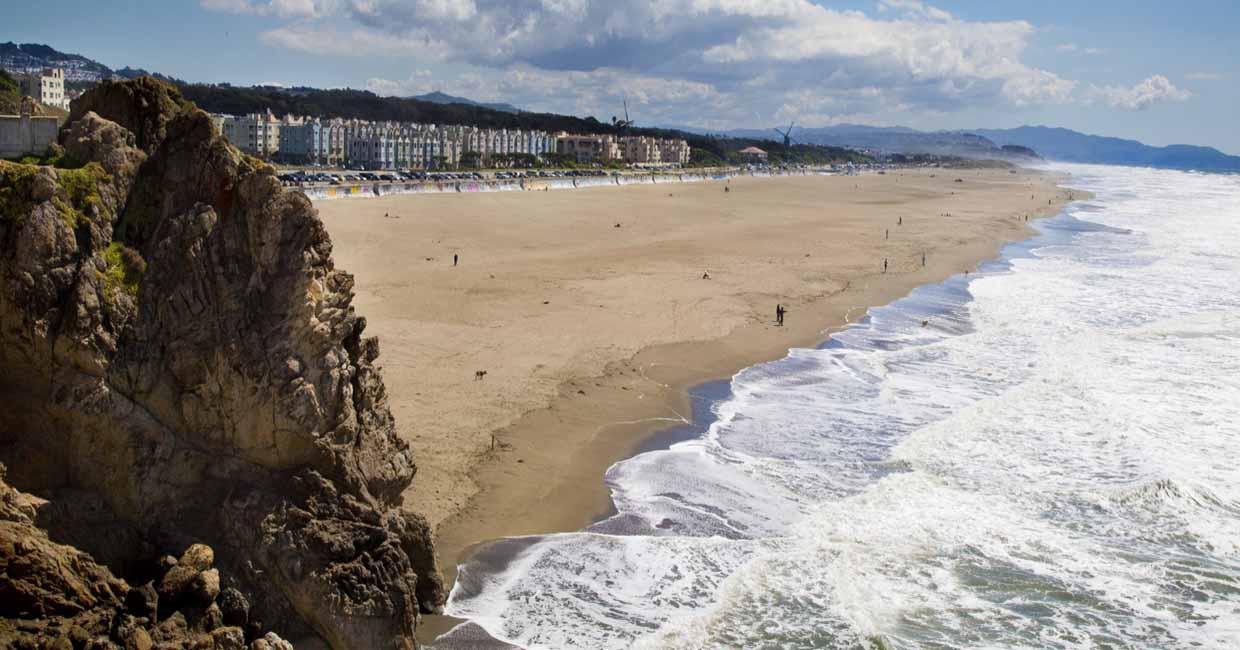Up and down California, when it rains, urban storm runoff picks up trash and contaminants as it flows untreated into the Pacific Ocean, San Francisco Bay, and other bodies of water.
San Francisco, however, doesn’t do that.
While other coastal cities in California have separate sewer and stormwater systems, most of San Francisco is served by a combined sewer system. This combined system provides greater environmental benefits because it captures and treats most stormwater to the same high standards that apply to wastewater from homes and businesses before releasing it to the bay or ocean.
Other coastal cities and counties in California don’t treat their stormwater before allowing it to flow into the bay or ocean. Treating stormwater removes pollutants picked up from city streets.
San Francisco’s system handles most rainstorms easily. Extreme storms can impact San Francisco’s combined sewer system in three main ways: clogging storm drains; requiring partially treated discharges along the ocean or bay; or, in rare instances, maxing out the capacity of the system.
Here is what the SFPUC is doing to handle severe storms:
Clearing Storm Drains
During intense storms, residents may see stormwater ponding at intersections where storm drains have become blocked by debris, including leaves, pushed by the runoff. In those situations, the pooling water has yet to enter our system.
The SFPUC deploys multiple Sewer Operation crews who rove the City both before and during storms to clear drains. They use rakes to clear the top of grates, as well as giant Vac-Con trucks to vacuum out debris below the grates. We also work with our citizen drain adopters and rain guardians to help us keep drains and rain gardens clear before and after storms. All residents can support our storm response by reporting blocked drains to 311 (for a blocked drain, select type “maintenance – catch basin”). In intense storms, the SFPUC initiates an incident command structure called “Stormwatch” and coordinates across different City departments, including Public Works and the Department of Emergency Management, to prepare and respond to storms.
Preventing Trash on Beaches
When our combined system receives large amounts of stormwater in a short period of time during intense storms, it is designed, and authorized by Environmental Protection Agency and Regional Water Board permits, to allow discharges into the bay or ocean from more than 30 outfalls. The SFPUC’s extensive system of underground storage, transport, and treatment boxes minimizes the frequency and volume of these discharges.
When discharges do occur, they consist overwhelmingly of stormwater. The flows are also treated prior to discharge to remove dirt, grit and trash. The system is specifically designed to prevent trash from escaping.
Here are examples of these outfalls in action at Ocean Beach (Vicente Outfall) and San Francisco Bay (Islais Creek North Outfall):
When discharges happen, the SFPUC proactively posts notices at nearby beaches and online, and also tests water quality daily.
Funding to Protect Your Property
Separately, there are rare instances when the sewer system can be overwhelmed during severe climate-change-driven storms. When that happens, combined wastewater (again, consisting primarily of stormwater) may exit through storm drains or manholes, particularly in low-lying areas of the city, and mix in with stormwater already on the surface.
In those infrequent situations, some residents in low-lying areas may experience backups through their building’s internal plumbing fixtures. The SFPUC provides resources, like Floodwater Grants, that offer up to $100,000 to eligible property owners to help protect their properties with flood resiliency projects, such as highly-effective backwater valves.
Countering the Effects of Climate Change
The SFPUC continues to make major investments to upgrade our combined sewer system, build green infrastructure to divert stormwater into the ground, and reduce the risk of flooding. Our continued investment in San Francisco’s utility infrastructure is part of our commitment to lead the way on climate action while protecting public health and the environment. We are investing almost $1 billion in capital improvements to our system, but those alone are not a solution for reducing the impact of the increasingly intense storms that climate change brings.
No sewer system can capture and manage the flows generated by every storm. Building pipes, pump stations, and storage vaults large enough to prevent flooding during extreme storms is not cost-effective, is infeasible in many instances, and can sometimes be impossible.
Recognizing these limitations, the City is taking a multi-pronged approach to addressing flood resiliency. ClimateSF brings together City agencies to take collective action through planning, policy, and guidance. One element includes designing the surface of our city to be more flood resilient – being thoughtful about what we build, where we build it, and how we build it. The SFPUC is working with partner agencies to propose a flood-resilient building code and strategies for flood-resilient design. The City is also a member of the National Flood Insurance Program, which subsidizes flood insurance, bringing down the cost of insurance premiums and covering flood damage to building and building contents. We do this while continuing to deliver high-quality water, power, and sewer services.


